Wars Of The Roses: Thirty Two Years Of Struggle To Claim English Throne
A. Sutherland - AncientPages.com - The Wars of the Roses was a civil war in England that lasted from 1455-1487. This thirty-two-year military conflict was fought between the supporters of the House of Lancaster (Lancastrians) and the supporters of the House of York (Yorkists).
Finding Richard's circlet after the battle, Lord Stanley hands it to Henry at the Battle of Bosworth Field, 1485. Engraving, 19th century. Image via Warfare History Network
The name of the wars is related to the roses; a red rose represents the Lancastrians (House of Lancastrians) and the Yorkists by a white rose.
It was a struggle to claim the right to the English throne, and each side sincerely believed they had a rightful claim. The Lancastrians and the Yorkists were two of England's most influential great aristocratic families.
Another important figure in this conflict was an English nobleman, administrator, and military commander, Richard Neville, 16th Earl of Warwick (1428 – 1471). He was wealthy and powerful, with political connections beyond the country's borders.
Neville was initially on the Yorkist side but later switched to the Lancastrian side, and in fact, he was instrumental in the deposition of two kings.
The dispute between the two houses began with the overthrow of King Richard by Henry Bolingbroke, Duke of Lancaster, in 1399. Henry Bolingbroke ( c. April 1367 – 20 March 1413), crowned Henry IV, was King of England from 1399 to 1413, but his rule was widely unpopular. Shortly, a revolt broke out in Wales, Cheshire, and Northumberland, and Henry IV managed to suppress the revolts with difficulty.
He died in 1413, and his successor was Henry V, a popular king and a strong leader who led England against France in the Hundred Years' War (1337 to 1453) and won many battles, giving the Lancastrians enough power to hold on to the throne. When Henry V died in 1422 from dysentery, his son, Henry VI, became his successor as King of England and France, but he had many difficulties in ruling the country. He had a mental illness inherited from his French grandfather, Charles VI.
Henry was an ineffective ruler, surrounded by some unpopular advisors such as Cardinal Beaufort, the Duke of Gloucester, and the Duke of Suffolk When Henry VI's life was about to end, the Yorkists were almost sure their representative would have a right of succession after him.
Henrik VI (1421-1471), Image credi: Anonymous - Public Domain
However, it was not that simple. The new King did not inherit the throne; instead, he was elected. Parliament played an essential role in this challenging political process. It had the enormous power to create a king.
"..Haughty, arrogant kings bowed submissively to its will. Henry could not make laws nor impose taxes without first summoning Parliament and obtaining his subjects' consent. But corrupting influences were at work, which was destined to cheat England out of her liberties for many a year." 1
The country's impoverishment to pay for the war and royal extravagances had awakened a troublesome spirit in the House of Commons. Cruelty to heretics also, and oppressive enactments were fought and defeated in this body. The Kikingclergy, and nobles, were drawing closer together and farther away from the people, and were devising ways of stifling their will…" wrote an American author and historian, Mary Platt Parmele, in her "A Short History of England, Ireland, and Scotland."
At the same time, according to the strict rules of hereditary succession, there were two others with claims superior to Henry's. The Duke of Lancaster, Henry's father (John of Gaunt), was only a younger son of Edward III. Richard Duke of York, his cousin, claimed a double descent from Duke Clarence and the Duke of York, both sons of Edward III.
It is also said that another immediate cause of the York revolt related to Queen Margaret Anjou, who unexpectedly revealed her male child. It had raised serious doubts about the origin of the righteous bed and, of course, seriously contributed to the beginning of the Wars of the Roses, a gloomy and very destructive period in the history of England, where most of the fighting took place, which resulted in significant loss of life and property.
"…Murders, executions, treacheries, adorn a network of intrigue and villainy, … was enough to have made the "White" and the "Red Rose" forever hateful to English eyes."
Many more significant battles and minor clashes occurred between the fighting parts; however, the last and decisive battle military encounter is known as the Battle of Bosworth Field (or Battle of Bosworth).
Henry VII (1457 – 1509), an offshoot of the House of Lancaster), raised a Lancastrian army against Richard III, defeated the Yorkists, and killed Richard at the Battle of Bosworth Field in 1485.
After this battle, the throne of England finally fell to the representative of a strong family - Henry Tudor.
Henry VII was crowned King and married Edward IV's daughter, Princess Elizabeth of York - a move to end the very tiring and devastating period in the history of England - Wars of the Roses. He reunited the two royal houses, merging the rival symbols of the red and white roses into the new emblem of the red and white Tudor rose.
The House of Tudor ruled the Kingdom of England until 1603.
Written by – A. Sutherland AncientPages.com Staff Writer
Updated on October 2, 2022
Copyright © AncientPages.com All rights reserved. This material may not be published, broadcast, rewritten or redistributed in whole or part without the express written permission of AncientPages.com
Expand for referencesReferences:
- Mary Parmele, History of England
More From Ancient Pages
-
 Teotihuacán: Enigmatic Birthplace Of The Gods And Its Obscure History
Civilizations | Jul 26, 2016
Teotihuacán: Enigmatic Birthplace Of The Gods And Its Obscure History
Civilizations | Jul 26, 2016 -
 Qanat Firaun -‘Canal Of The Pharaohs’ Is The Ancient World’s Longest Underground Tunnel
Featured Stories | Mar 10, 2022
Qanat Firaun -‘Canal Of The Pharaohs’ Is The Ancient World’s Longest Underground Tunnel
Featured Stories | Mar 10, 2022 -
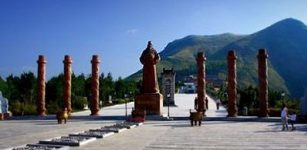 On this day in history: Li Shimin becomes Emperor Taizong of Tang, China – Sep 4, 626
News | Sep 4, 2015
On this day in history: Li Shimin becomes Emperor Taizong of Tang, China – Sep 4, 626
News | Sep 4, 2015 -
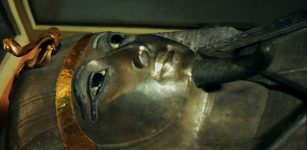 Pharaoh Psusennes I Was Buried In The Silver Coffin Decorated With Gold
Featured Stories | Jan 25, 2021
Pharaoh Psusennes I Was Buried In The Silver Coffin Decorated With Gold
Featured Stories | Jan 25, 2021 -
 Vegvisir – Old, Sacred Norse Symbol Of Protection And Guidance
Ancient Symbols | May 23, 2020
Vegvisir – Old, Sacred Norse Symbol Of Protection And Guidance
Ancient Symbols | May 23, 2020 -
 UK’s Oldest Human DNA Reveals Two Genetically Distinct Human Groups Migrated To Britain At The End Of Last Ice Age
Archaeology | Oct 24, 2022
UK’s Oldest Human DNA Reveals Two Genetically Distinct Human Groups Migrated To Britain At The End Of Last Ice Age
Archaeology | Oct 24, 2022 -
 On This Day In History: Battle Of Cowpens Took Place – On Jan 17, 1781
News | Jan 17, 2017
On This Day In History: Battle Of Cowpens Took Place – On Jan 17, 1781
News | Jan 17, 2017 -
 Mysterious Ancient Human ‘Ghost’ Species Discovered With Help Of Saliva
Archaeology | Jul 25, 2017
Mysterious Ancient Human ‘Ghost’ Species Discovered With Help Of Saliva
Archaeology | Jul 25, 2017 -
 Unusual Iron Age Burial With Warrior And Sword Discovered On Gotland, Sweden – Was He From The Roman Empire?
Archaeology | Sep 7, 2021
Unusual Iron Age Burial With Warrior And Sword Discovered On Gotland, Sweden – Was He From The Roman Empire?
Archaeology | Sep 7, 2021 -
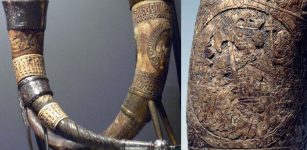 Ancient Icelandic Drinking Horn Reveals An Interesting Story About Saint-King Olaf
Ancient Traditions And Customs | Mar 29, 2017
Ancient Icelandic Drinking Horn Reveals An Interesting Story About Saint-King Olaf
Ancient Traditions And Customs | Mar 29, 2017 -
 The Fierce Great Heathen Army And The Invasion Of East Anglia
Vikings | Aug 8, 2022
The Fierce Great Heathen Army And The Invasion Of East Anglia
Vikings | Aug 8, 2022 -
 4,000-Year-Old ‘Woodhenge’ Discovered In Denmark Is An Extraordinary Find!
Archaeology | Mar 10, 2025
4,000-Year-Old ‘Woodhenge’ Discovered In Denmark Is An Extraordinary Find!
Archaeology | Mar 10, 2025 -
 Yet Another Beautiful Roman Mosaic In Hatay, Turkey
Archaeology | Jul 14, 2022
Yet Another Beautiful Roman Mosaic In Hatay, Turkey
Archaeology | Jul 14, 2022 -
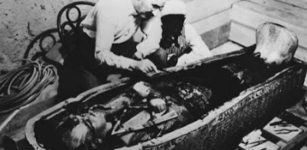 Howard Carter Stole Tutankhamun’s Treasures – Previously Unpublished Letter Reveals
Archaeology | Aug 15, 2022
Howard Carter Stole Tutankhamun’s Treasures – Previously Unpublished Letter Reveals
Archaeology | Aug 15, 2022 -
 Museum Classifies Roman Emperor Elagabalus As Trans – But Modern Labels Oversimplify Ancient Gender Identities
Featured Stories | Nov 28, 2023
Museum Classifies Roman Emperor Elagabalus As Trans – But Modern Labels Oversimplify Ancient Gender Identities
Featured Stories | Nov 28, 2023 -
 Beautiful Legends Of The Great Smoky Mountains: The Cherokee’s Little People Nunnehi And The Medicine Lake Ataga’hi
Myths & Legends | Jul 10, 2024
Beautiful Legends Of The Great Smoky Mountains: The Cherokee’s Little People Nunnehi And The Medicine Lake Ataga’hi
Myths & Legends | Jul 10, 2024 -
 Buddhist ‘Dillu Roy’ Resembles Mohenjo Daro And Harappa And Now Unveils Its Ancient Secrets
Archaeology | Aug 25, 2020
Buddhist ‘Dillu Roy’ Resembles Mohenjo Daro And Harappa And Now Unveils Its Ancient Secrets
Archaeology | Aug 25, 2020 -
 Tiny Tools And Skills Of Mysterious Toaleans People In Southernmost Sulawesi, Indonesia
Archaeology | May 27, 2021
Tiny Tools And Skills Of Mysterious Toaleans People In Southernmost Sulawesi, Indonesia
Archaeology | May 27, 2021 -
 Who Were The First Icelanders?
Archaeology | Jun 4, 2018
Who Were The First Icelanders?
Archaeology | Jun 4, 2018 -
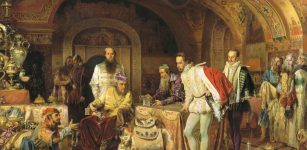 Ivan The Terrible: Military Arsenal Unearthed Near Moscow
Archaeology | Jan 2, 2016
Ivan The Terrible: Military Arsenal Unearthed Near Moscow
Archaeology | Jan 2, 2016



